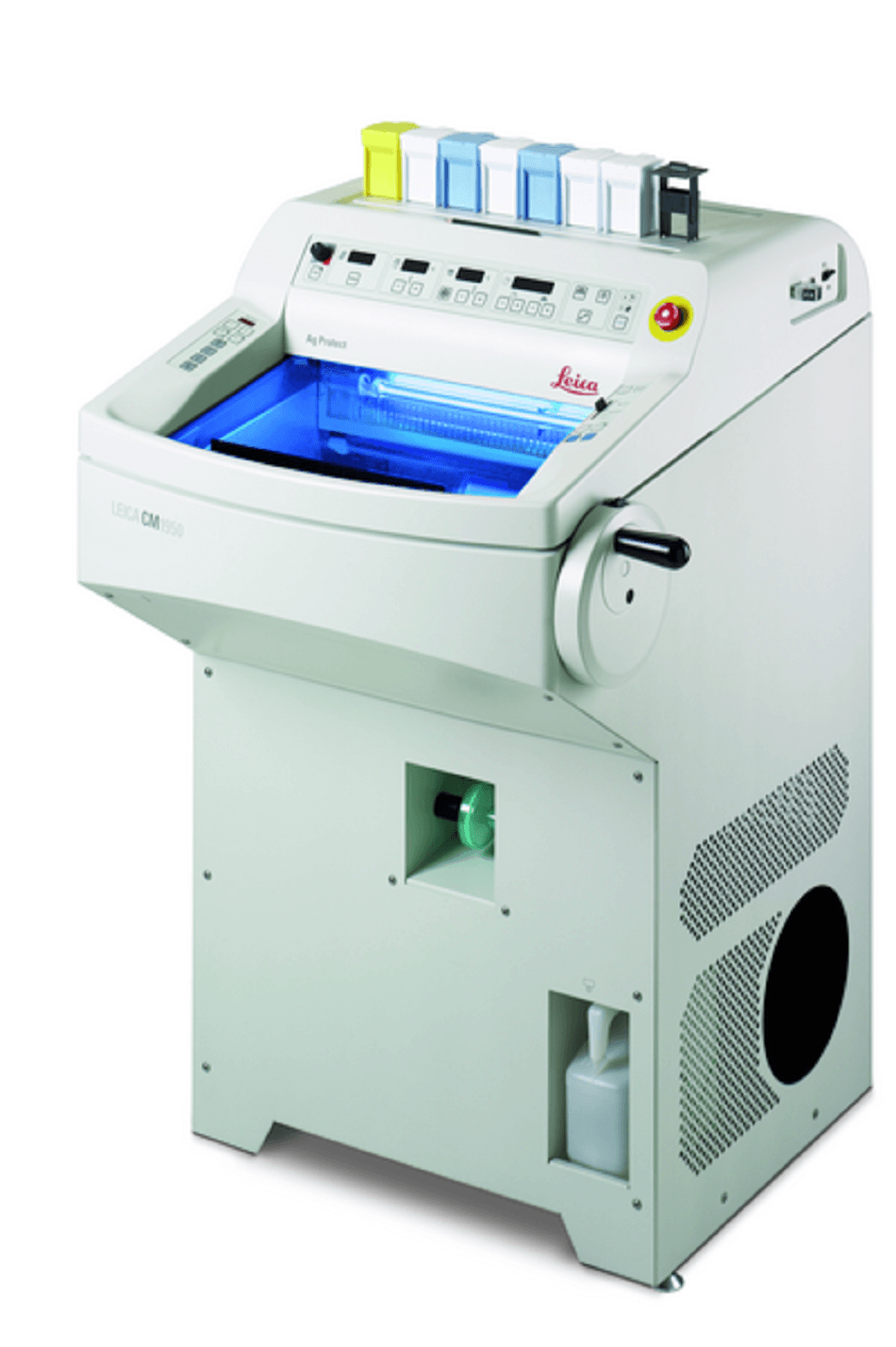Now it is easier, safer and faster to produce the high-quality frozen sections that pathologists rely on. This is thanks to the new Leica CM1950 cryostat platform released by Leica Microsystems as the latest addition to the respected Leica cryomicrotomy range. The CM1950 platform includes a standard instrument plus a range of options that allow each laboratory to create a cryostat that matches their individual needs.

Like all Leica Microsystems products, the CM1950 is the result of extensive customer consultation. With a CM1950, laboratories can be sure they have an instrument that meets their requirements for high quality sectioning, unmatched user safety and significantly improved workflows.
To ensure the CM1950 meets the demanding expectations of cryostat users, Leica Microsystems have introduced two significant features: the CryoZone™ cooling system and the optional vacuum waste removal system. The CryoZone system controls a zone of uniformly cool air in the critical areas of the cryochamber. This cool air circulates around the specimen, knife and anti-roll guide to create the optimal conditions for consistent, high-quality sectioning. The optional vacuum system aids workflow and safety. It saves time by keeping sections flat and wrinkle-free and enhances operator safety by removing waste material.
Quality
Quality sectioning builds diagnostic confidence and CM1950 cryostats make it easier to consistently meet exacting standards. With precise microtome and object feed mechanisms, rapid freezing, and accurate temperature control, the CM1950 operator is always in full control of each and every section. Optional extras like a hesitation-free motor-driven cutting stroke and vacuum-assisted sectioning help the operator even further.
Safety
When working with CM1950 cryostats, operators can be assured that their safety is being well looked after. There is a growing concern about biohazard exposure and non-ergonomic practice. The CM1950 platform alleviates these concerns with brilliant ergonomics, optional vacuum-assisted waste removal and the unmatched biohazard protection offered by Leica Microsystems’ UVC disinfection and AgProtect™ antibacterial nanosilver surface coating.
Workflow
With productivity-enhancing CM1950 cryostats it is possible to reduce error rates and accelerate sectioning without compromising quality. Thoughtful innovations include color-coded specimen discs that aid sample identification, fast and secure specimen clamping that requires minimal operator force, and rapid, frost-free freezing. Errors are also reduced and operation accelerated by the straightforward, ergonomically-positioned operator controls. With single-function keys and easily readable status displays, operators have all the control they need right at their fingertips.